Thesis - Beer as Process
In order to know a small batch supplier process better I started brewing beer three weeks ago. It’s been a delightful process of cleaning and re-cleaning my 100 square foot kitchen floor. And as we speak, I am conditioning the first 5 gallon batch in bottles, sitting in my hallway!
Here are the steps of my first batch.
There are six major phases to the process.
Mash Wort Pitch Ferment Bottle/Can Drink
Within these six major steps there are 24 smaller steps, the first step is the Mash:
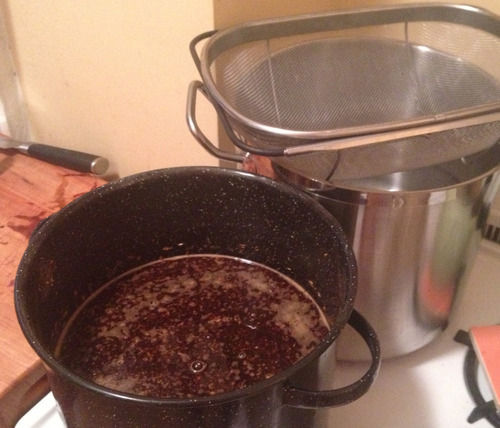
Gather supplies Start liquid yeast Heat water to 160° Add grain, keep at 154° for 1 hour
###Wort
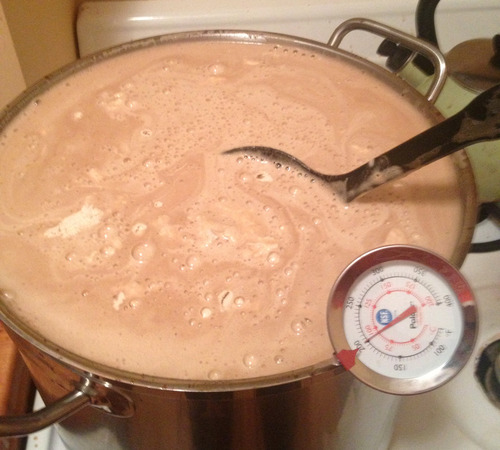
Pour grain into pot of boiling water through a strainer Boil and add extract, first hops, boil for 1 hour With 1 minute left add additional hops for flavor and armoa
###Pitching
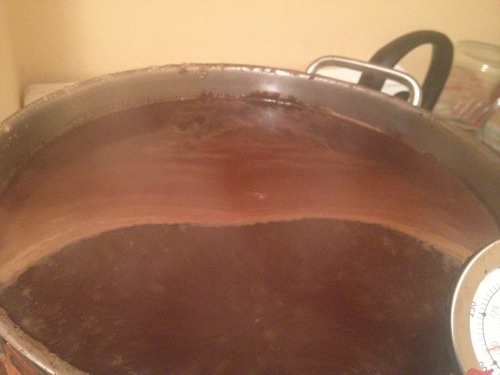
Sanitize the hell out of everything Cool the wort by putting the whole pot in the sink with ice and water, this takes approx. an hour to an hour and a half Once the wort is around 80-75° take the original gravity with the hydrometer Pour the wort into a 6 gallon bucket aggressively, this is the only time the wort will be exposed to a lot of oxygen, keep tumbling the wort for five minutes Pour the wort into the fermenter through the funnel, pouring 5 gallons isn’t easy so be careful (I nearly covered my kitchen floor with stickiness) Add cap and tubbing, place the other end of the tubing into a vat of water, when the beer first ferments it will sometimes spit up, this gives it an outlet.
###Fermenting
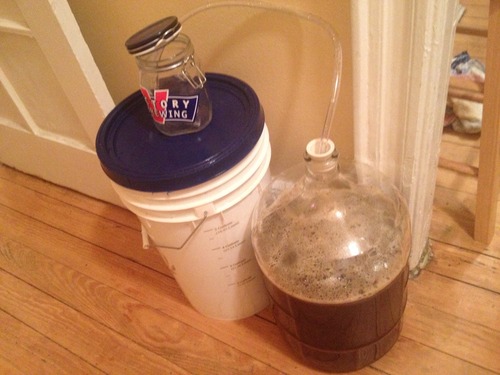
After a few days fermenting replace the tube with a water cap. Wait two weeks… (depends on recipe) Use thief to take a sample From the sample measure for final gravity. Do this three days in a row, if the reading stays the same the beer is done fermenting.
###Bottling/Canning
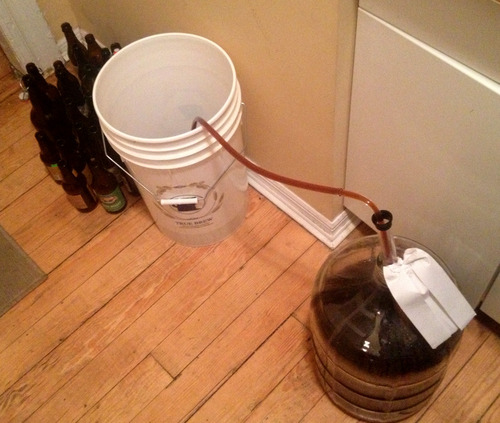
Sanitize the shit out of everything Calculate sugar needed to prime bottles (http://www.northernbrewer.com/priming-sugar-calculator/) Add sugar to bucket, siphon beer into bottling bucket Siphon beer from bucket to bottles (this is very messy, again covered my floor in sticky beer) Use capper to cap bottles, store them at room temperature in a dark place (mine are in a box) A week later, refrigerate one bottle, open to see if it’s carbonated, if it is and it taste good: beers ready.
###Celebrate with a home-brewed beer!
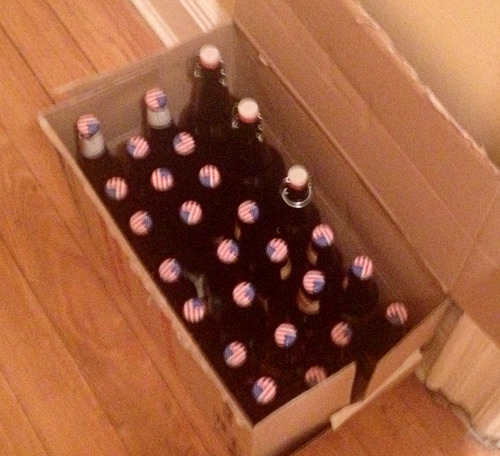
In total, the cost was around $240.00 USD and it took about 530 hours. You can see below a breakdown.
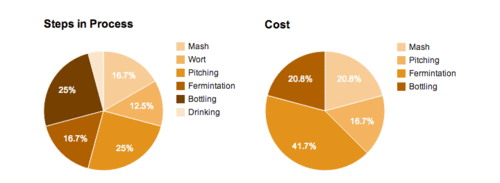
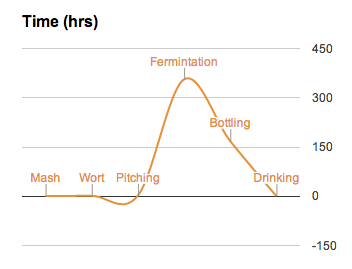
Overall my experience brewing was fun and sometimes nerve racking. One night bottling I spilled beer all over the floor. My fiancé was so mad at me she wouldn’t let me use a towel. So instead of just soaking it up in a beach towel I spent the next hour on my knees sponging it up into a bucket. I don’t blame her as there is nothing more messy than a sticky batch of warm beer.
I’ve learned a lot about how important temperatures and how temperatures and season are extremely relevant to beer. Farmhouse Ales and Winter Beir sound less like names and more like seasons. It’s process is automated by almost all brewers that are not home brewers, whereas home brewing is where the chemistry is really happening. That one cold week fermenting in the hallway may be the different between a lager and a bitter pilsner.
There are also many entrance points in which the home brewer can add variables. From the start with ingredients in the mash to the length of the boil, to the priming and aging. Even when to add ingredients, hops at the begging of the boil make the wort bitter and heavy, at the end they make it session-able and aromatic.
My conclusion will come after the first beer…